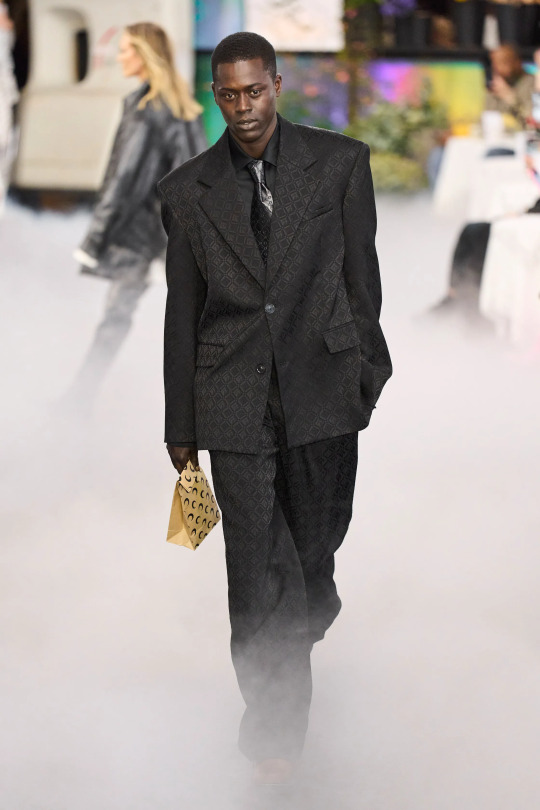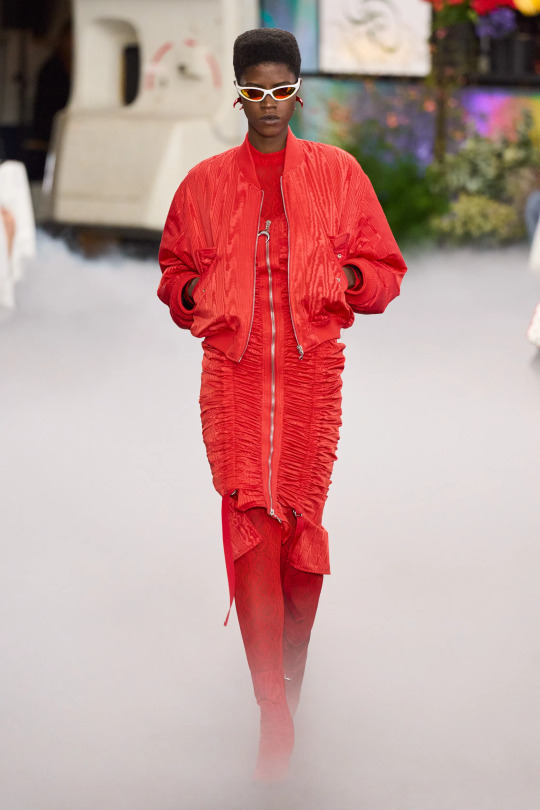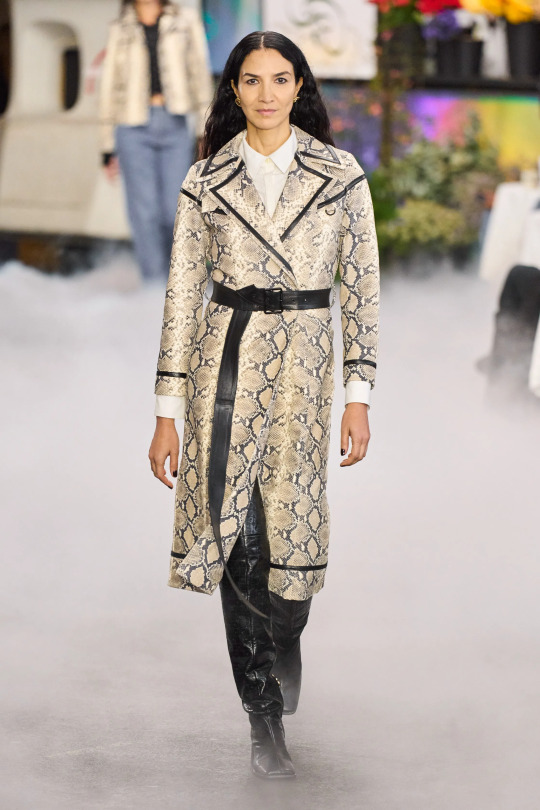#ida b wells
Text
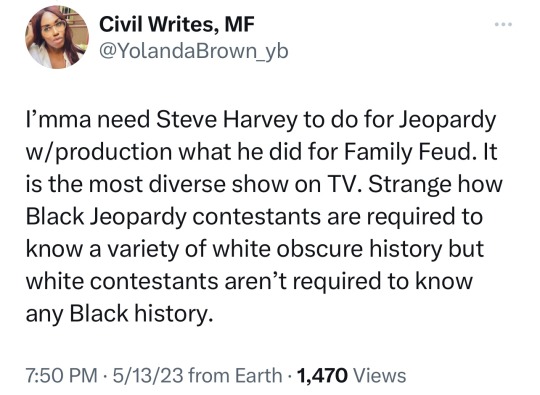
Few videos have ever so clearly illustrated the two worlds that exist in America. The fact that in one of these Jeopardy recaps, none of the white contestants could even identify Ketanji Brown-Jackson—the first Black woman Supreme Court Justice, seated in 2022—was as galling as it was informative.
These are supposedly some of the brightest people in the country, but they don’t even know some of the most cursory details of Black history—conversely, Black Americans are all but required to be aware of and know even thee most obscure details of white “culture” and European history if we want gainful employment and don’t want to be ridiculed or ostracized.
Generally speaking, white people already know precious little about the contributions and the importance of Black History and other non-European cultures, which is why when I see Ron DeSantis and other Republicans mandating laws that whitewash and erase Black history, it makes me realize just how extraordinarily EASY it is to do, because white America is already starting from a severe and intentionally maintained knowledge deficit.
#politics#black history#jeopardy#whitewashing history#american history#two americas#white ignorance#ketanji brown jackson#ida b wells#ida b. wells#education
468 notes
·
View notes
Text
Is Klaus' legal logic of The Bad Beginning sensible?
* Joint Theory: @unfortunatetheorist with @snicketstrange *
Klaus's speech to the audience during the events of The Bad Beginning had a carefully thought-out structure, anchored in deeply rooted legal, but more so ethical, principles. In defence of his sister, who was forced into a marriage, Klaus appears to have adopted a multifaceted approach to challenge the marriage's validity.
Firstly, John Locke.
John Locke was one of the first people to suggest that humans have natural rights. He also wrote a book about this called the 'Two Treatises of Government'.
Klaus likely invoked John Locke's arguments on natural rights to contend that the marriage was not consensual and, therefore, violated his sister's fundamental rights to life and liberty. The idea that the bride must sign "with her own hand" is interpreted here not literally, but as an indicator of action "of her own free will," supported by Locke's principles.
Secondly, Thurgood Marshall.
Thurgood Marshall was the first black Supreme Court Justice of the USA, who fought for the rights of black citizens against Jim Crow's extremely racist ideologies.
His defence of the 14th Amendment may have been used by Klaus to argue that, in cases of ambiguity or doubt, the judge's decision should lean towards protecting the more vulnerable party. This point strengthens the point that, if there is doubt about the how valid Violet's consent is, the legal and ethical obligation is to invalidate the marriage. The 14th Amendment to the United States Constitution is crucial for establishing constitutional rights and consists of various clauses. The most relevant for Klaus's case is probably the Equal Protection Clause, which states that no state may "deny to any person within its jurisdiction the equal protection of the laws." Klaus may have leaned especially on this clause to argue that, in situations of uncertainty, i.e. his sister's forced marriage, the interpretation/application of the law should be done in a manner that protects (in this case) Violet. This would align with the principles of the 14th Amendment, using it for equal protection under the law to invalidate the marriage and protect his sister's rights.
Third, Ida B. Wells.
Ida B. Wells was, similar to Thurgood Marshall, an early civil rights campaigner, who campaigned for anti-lynching (a word which here means, opposing the brutally violent act known as lynching).
Klaus likely drew inspiration from Ida B. Wells to assert that everyone has the right to be heard and protected by authorities, regardless of their age or origin. This argument would serve to legitimize his own standing as his sister's defender in court, neutralizing any potential prejudice against him for being a child or, perhaps, belonging to a minority (he and his sisters are Jewish).
Moreover, the presence of a judge at the ceremony should not be viewed as merely a formality, but a control mechanism to ensure mutual consent, something that resonates strongly with Locke and Marshall's ideals about the role of government and law. Thus, if either of the spouses gave any evidence to the judge that the marriage was conducted under duress, the judge would be obligated to invalidate the marriage. Violet's chosen signal was to sign the document with her left hand instead of her right hand. As the judge explained, the marriage could be invalidated due to this discreet yet appropriate signal.
Lastly, the word "apocryphal" that Lemony uses to describe Klaus's argument suggests a non-conventional but insightful interpretation of the law, something that seems to echo Marshall's "doubtful insights" and Wells' "moral conviction." Instead of resorting to literalism ('literally' - with her own hand, i.e. Violet's dominant hand), Klaus's argument was much deeper and grounded, touching on the very essence of what legislation and the role of judges are. That's why Justice Strauss was so fascinated by the young boy's speech.
In summary, the historical references evidence that Klaus wove these diverse elements into a cohesive and compelling argument, utilising the legacy of these thinkers to question and, ideally, invalidate his sister Violet's forced marriage.
¬ Th3r3534rch1ngr4ph & @snicketstrange,
Unfortunate Theorists/Snicketologists
#asoue#asoue netflix#theory#vfd#a series of unfortunate events#lemony snicket#snicketverse#count olaf#thurgood marshall#ida b wells#john locke#legally snicket#Very Fatiguing Definition(s)#'My brother's defining words again' ¬ Kit Snicket
76 notes
·
View notes
Text

21 notes
·
View notes
Photo

Ida B. Wells-Barnett by Sallie E. Garrity, c.1893 (National Portrait Gallery)
#ida b wells#fashion history#historical fashion#gilded age#1890s#19th century#turn of the century#1893#historical photography#albumen print#albumen silver print#silver print#national portrait gallery#smithsonian institution
1K notes
·
View notes
Text
As February is Black History Month / African-American History Month (I'll be honest I don't know whether either of those terms are preferred - if someone could let me know, I would appreciate it), I thought I would make a post about how Mattel and the Barbie brand have intersected with this.
I have previously made some posts about this subject so just to collate some links:
A brief history of depictions of Black Barbies.
One of Mattel's first media tie-in dolls - Julia from the show Julia.
Alpha Kappa Alpha Barbie to commemorate America's first Black sorority.
Backstory on two of the dolls in the Barbie doll line depicted exclusively as Black women - Christie and Nikki.
The lore of Brooklyn and Malibu.
To expand on the above - I must shout out again Kitty Black Perkins by name even though I mentioned her in the history of Black Barbies post. Perkins is a now-retired Barbie designer credited with designing the first Barbie to be depicted as Black (that is to say, not a Francie or a Christie or another character - but Barbie), among other Barbies.
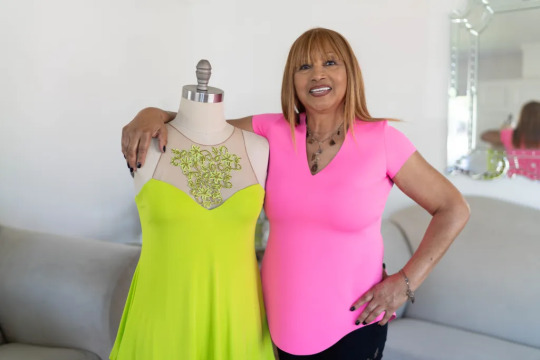
In addition to the first Black Barbie, Perkins is credited with design of four Holiday Barbies, as well as a number of other Barbies and friends of Barbie - apparently designing or having input into the design of hundreds of Barbies.

Without the influence of Perkins, it's very possible that we would not have modern doll releases featuring Brooklyn as a lead alongside Malibu.


Mattel have included a number of historical Black women in their Inspiring Women collection; this is not all of them by any means, but an example.

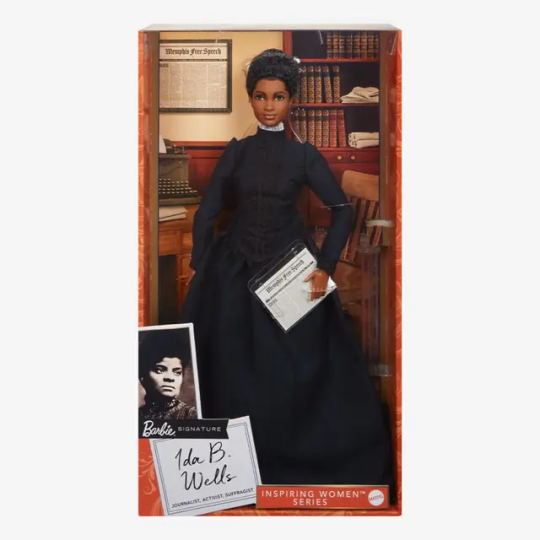

#barbie#black history month#black history#african american history#african american history month#kitty black perkins#brooklyn roberts#holiday barbie#inspiring women#sheroes#bessie coleman#ida b wells#maya angelou
14 notes
·
View notes
Text

The Fearless Trailblazer: Ida B. Wells' Legacy of Justice and Equality
22 notes
·
View notes
Text
On This Day In History
October 26th, 1892: Ida B. Wells publishes Southern Horrors: Lynch Law in all its Phases, an incredibly influential pamphlet bringing light to the bloody practice of racial lynching in the American South.
73 notes
·
View notes
Text
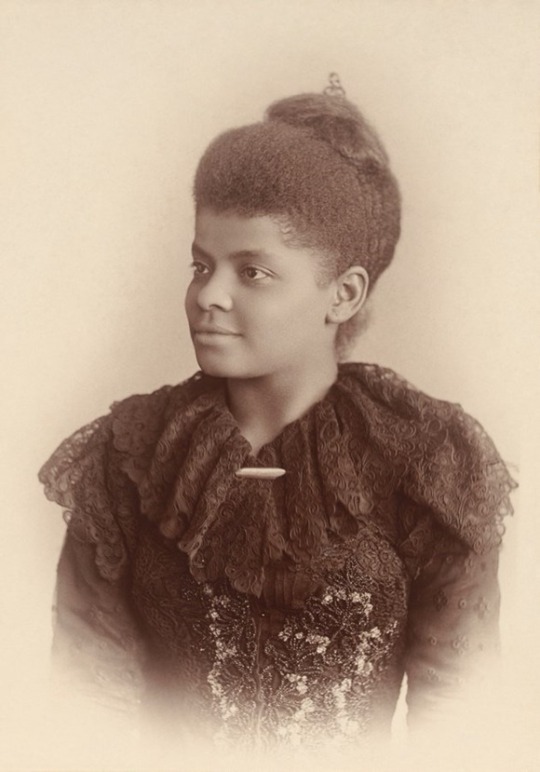
Ida B Wells (1893)
She was an American investigative journalist, educator and an early leader in the civil rights movement.
#victorian#victorian photography#ida b wells#1890s#late victorian#miss cromwell#vintage photography#lace#early photography#photography
12 notes
·
View notes
Text

Legends from the past are great, but living Legends are better. #s
3 notes
·
View notes
Text
And then Ida B. Wells:
Ida B. Wells was likewise a figure of transition, like Booker T. Washington and W.E.B. Du Bois, her contemporaries. She was one of those Black activists of the era of the transition from emancipation to shaping the contours of Black history when Black people determined their own affairs as much as possible. She was also the leader of a one-woman war against lynching, one that she won and which marked one of the greatest victories of its era, as well as a founder of the NAACP.
I spotlighted these two first to note a point that all historians must always keep in mind. Periodization is a thing of convenience and jargon. People's lives are not shaped by it save in retrospect and what are seen as different eras are ones that people live through one after the other.
#lightdancer comments on history#women's history month#black history#black women's history#ida b wells
9 notes
·
View notes
Text

3 notes
·
View notes
Text
Our country’s national crime is lynching. It is not the creature of an hour, the sudden outburst of uncontrolled fury, or the unspeakable brutality of an insane mob. It represents the cool, calculating deliberation of intelligent people who openly avow that there is an “unwritten law” that justifies them in putting human beings to death without complaint under oath, without trial by jury, without opportunity to make defense, and without right of appeal.
The alleged menace of universal suffrage having been avoided by the absolute suppression of the negro vote, the spirit of mob murder should have been satisfied and the butchery of negroes should have ceased. But men, women, and children were the victims of murder by individuals and murder by mobs, just as they had been when killed at the demands of the “unwritten law” to prevent “negro domination.” Negroes were killed for disputing over terms of contracts with their employers. If a few barns were burned some colored man was killed to stop it. If a colored man resented the imposition of a white man and the two came to blows, the colored man had to die, either at the hands of the white man then and there or later at the hands of a mob that speedily gathered. If he showed a spirit of courageous manhood he was hanged for his pains, and the killing was justified by the declaration that he was a “saucy nigger.” Colored women have been murdered because they refused to tell the mobs where relatives could be found for “lynching bees.” Boys of fourteen years have been lynched by white representatives of American civilization. In fact, for all kinds of offenses–and, for no offenses–from murders to misdemeanors, men and women are put to death without judge or jury; so that, although the political excuse was no longer necessary, the wholesale murder of human beings went on just the same. A new name was given to the killings and a new excuse was invented for so doing.
Again the aid of the “unwritten law” is invoked, and again it comes to the rescue.
— IDA B. WELLS, Lynch Law in America, January 1900
30 notes
·
View notes
Photo
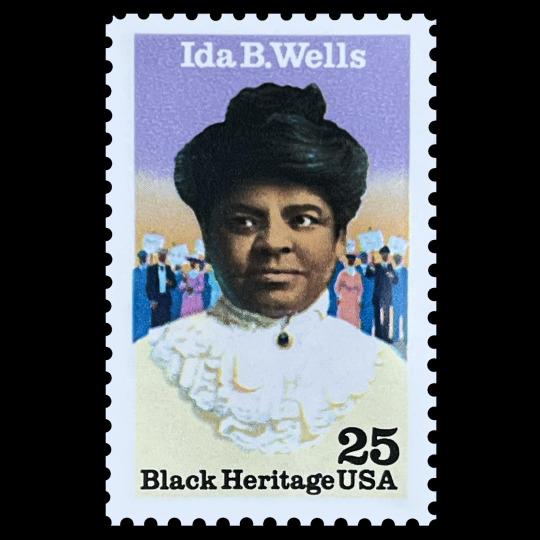
US postage stamp, 1990
"Ida B. Wells"
Scott #2442
Issued: February 1, 1990 - Chicago, IL
Quantity: 153,125,000
Designer: Jayne Hertko
Printed By: American Bank Note Co (Photogravure)
Ida Bell Wells-Barnett was an American investigative journalist, educator, and early leader in the civil rights movement. She was one of the founders of the National Association for the Advancement of Colored People.
#stamp#stamps#stamp collecting#Stamp Collection#Stamp Collector#mail#usps#postcard#postal#postage stamps#postage stamp#postage#Philately#Philatelic#ida wells#ida b wells#black heritage#civil rights#NAACP
5 notes
·
View notes
Text

I forgot about this brand of battery found this in the parkinglot behind the laundromat.
I remember clearly being about maybe 1 or 2 & home with my GreatGrandma who had custody of me. She had 2 Husbands; I'm not sure but I believe it was my Grandfather Bill over that night also. Anyway I remember crawling under the bed & finding this type of battery. I loved cats as a baby & I’ve always wanted a black cat that looked like this. I remember trying to catch the cats that lived outside & since it was night they all looked black to me with glowing eyes from what I remember. Idk why but this cat battery & the girl with the umbrella on the salt are 2 logos I remember seeing at a young age.
#Cat batteries#Everready#batteries#80s#90s#Cat#lover#chicago#ida b wells#memories#illinois#1989#1990
1 note
·
View note

